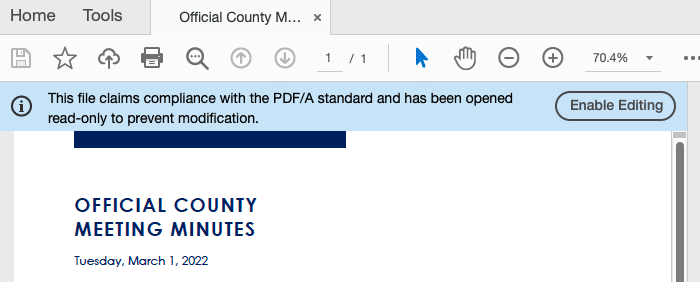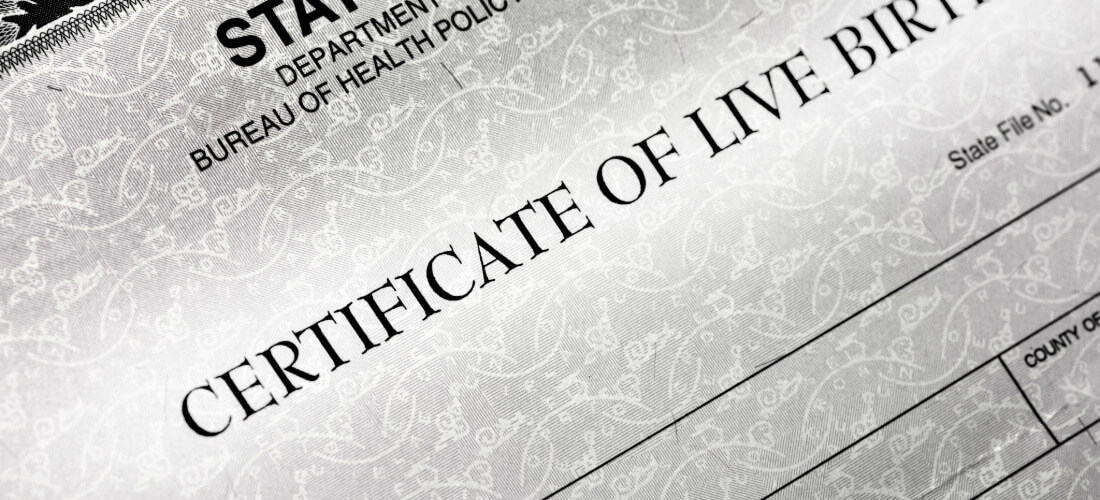
With today’s rapid technological advancements, many programs that were once widely used have since been replaced with newer or more popular alternatives. As a result, businesses and individuals are left to find workarounds to rescue their information from file formats that are no longer supported.
The issue of longevity is of particular concern in industries such as academia, finance, and government, where collections of important electronic documents are and will continue to grow over time. Whether adhering to document retention schedules or undertaking initiatives to make vital records more accessible to citizens, agencies that have an interest in archiving digital documents may be familiar with the PDF/A file format.
To understand why government agencies are looking at this format for the long-term preservation of their documents, let’s take a closer look at what PDF/A is and how it functions as a means for archiving.
What is PDF/A?
PDF/A is a subset of PDF designed to support the preservation of electronic documents. One of the primary concerns when it comes to archiving electronic documents is ensuring the files retain their accessibility over time so when retrieved at a later date, the information contained within the file is formatted and displayed correctly.
In order to effectively preserve a given document as it is—in other words, to ensure it looks as close to the original as possible regardless of how much time has passed or the tech advancements that have occurred in the interim—there are certain restrictions placed on a PDF/A file so it is self-contained. These restrictions are precisely what make the PDF/A format effective in maintaining a document’s integrity.
What makes PDF/A different?
PDF/A differs from PDF in that all components of the file must be embedded, including any images, fonts, and color information. To help preserve the original content, PDF/A files cannot be changed or modified once created.

Here are some additional considerations to take into account when determining if PDF/A is the appropriate format for an agency’s purposes:
- E-Signatures: In addition to graphic components, PDF/A files can contain electronic signatures
- External Links and Annotations: While PDF/A files can include links to external websites, it’s a good idea to consider whether a particular link is likely to remain active or if there’s a good chance it will be broken months or years down the line when someone attempts to access it
- Encryption: Unlike regular PDF documents, PDF/A files do not support data encryption, meaning the location in which the file is stored should be secure to help protect the files and maintain confidentiality where required
- Audio and Video: The use of audio and video content is not permitted in PDF/A files
It’s also worth noting that there are different versions within the PDF/A family and earlier versions might not support all features. For example, only PDF/A-4 permits the use of JavaScript in files.
Are there other formats that support the archival of important documents?
While it is not the only format available, PDF/A is recognized as the ISO standard for archiving electronic documents. Other file formats, such as TIFF files, typically come with their own set of limitations, so it is worth researching additional file formats in depth to determine which format is most likely to meet the agency’s needs.
Electronic Document Preservation for Government
A 2021 study identifying the top government technology trends, predicts that by 2025 more than half of all government agencies will have modernized their core legacy applications.
With increasing numbers of agencies utilizing cloud solutions to simultaneously protect and make records more accessible, government staff is tasked with determining the best format for preserving their files.
“GovOS currently provides enhanced security around images stored in the cloud, including proprietary technology that alerts users of any changes to a recorded document image. We continue to investigate new technologies and will incorporate them where appropriate. PDF/A will be offered where required.”
-Product Manager, GovOS
File format is a key component when developing a long-term plan to preserve electronic documents. Public institutions in the U.S. and worldwide use PDF/A for archiving documents and agencies like the California Secretary of State have identified it as a preferred file format for long-term storage.
Have questions about where to get started with your own agency’s records? Schedule time to talk with one of our experts to learn more about file formats and how GovOS can help.









